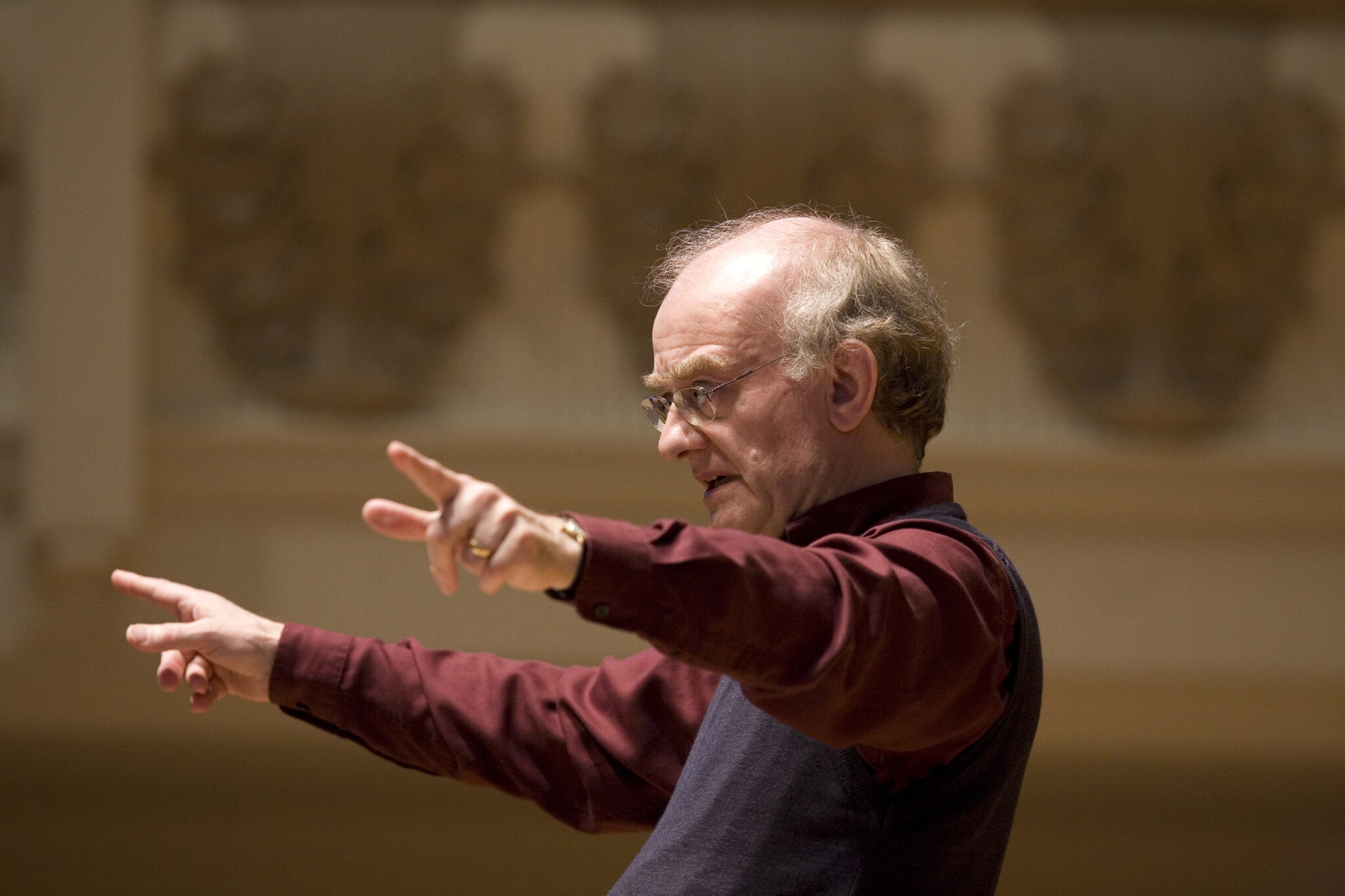<em>Michael White enjoys two Requiems, a Stabat Mater and two outstanding premieres</em>.
Musically, the journey through Holy Week to Easter is a slow descent into darkness followed by a sudden resurgence of light. And the descent is marked by Stabat Maters, Passion settings, Requiems… a solemn feast largely consumed in minor keys of which I had a surfeit this year, including two Requiems in a single concert at Oxford’s Sheldonian Theatre. They were the Fauré and the Rutter, which fit well together, focused as they are on consolation as opposed to brimstone. And as done here, with John Rutter himself conducting the choir of Merton College and the Oxford Philharmonic Orchestra, they made a close connection.
Faure’s Requiem is usually delivered with a fair-sized orchestra, but was first written for smaller forces that would fit the sanctuary of the Madeleine in Paris where he ran the music. And it was Rutter who did the scholarship on that early version to produce a performing edition that’s strikingly intimate and, needless to say, the one he prefers.
I’m not sure I’m with him there, but what we heard at the Sheldonian was lovingly presented. And Rutter’s love of Fauré certainly feeds into his own Requiem, which gets criticised as easy-listening but is in truth superbly crafted. Rutter knows how to make voices flourish, shine, delight. And if he pays his dues to past composers (Fauré being just the start), there’s plenty of himself there too.
It was a special thing to watch him on the podium directing these two scores together. Merton choir sang well, despite the raw acoustic of a room where voices don’t exactly float. The Oxford Phil supported them impressively. A class act.
Something else that’s an increasingly class act is Figure: a period-performance group with an awkward name (meant, I think, to be pronounced with a French accent and implied exclamation mark) but a rapidly achieved track-record for projects that stand out from the ordinary and are exquisitely realised. Their latest was a semi-staging of Pergolesi’s<em> Stabat Mater</em>, done “immersively” amid a standing audience at the atmospheric former chapel in London’s theatreland now called Stone Nest. Featuring a small band led from the keyboard by Frederick Waxman, the soprano and alto vocal parts were distributed among five singers representing different generations of womanhood: at one end the veteran Emma Kirkby, at the other a fresh-voiced schoolgirl, Nadya Pickup. And the idea was for them all to open out the suffering of Mary at the foot of the Cross, which accounts for most of the Stabat Mater text, and share in the promise of heaven with which it ends.
The staging was a touch vague, avoiding specific narratives in favour of a lot of running up and down and group hugs. But it had a tenderness to which I happily surrendered. And the only problem was that, as so often with “immersive” performance where the audience is meant to move around in free abandon, everyone in fact stood rooted to the spot. A sadly English inhibition – though it testified to the intensity of the experience.
This year sees the 300th anniversary of Bach’s St John Passion, first performed at Leipzig’s Nikolaikirche at Easter 1724. And though there was no shortage of commemorative performances, my choice was the one on Good Friday by Polyphony with the Orchestra of the Age of Enlightenment at Smith Square.
Stephen Layton, the conductor, gave it strong, unsentimental clarity without diminishing the sense of a devotional encounter. James Gilchrist brought technicolour definition to the Evangelist’s recitatives. Neal Davies was a feisty, sometimes angrily indignant, Jesus.
And there was fine continuo playing from the cellist Jonathan Mason, gently spinning Bach’s dance-rhythms into a heartfelt lullaby of death. It was my Easter highlight.
But in the approach to Easter came two other highlights, both of them from the BBCSO at the Barbican, and both premieres. James MacMillan’s Fiat Lux was actually written four years ago for the consecration of a new cathedral in California but only now receiving its first UK performance. And it was worth waiting for.
A 30-minute cantata for choir and soloists, it re-told the creation story in a mixture of Latin and English. And though the opening was slow-burn, the eventual emergence from darkness to light was duly climactic – leading to a final Amen chorus of such splendour it gave Handel (in Messiah) a run for his money. Repertory potential surely.
The other premiere was a new Violin Concerto by Raymond Yiu, a Chinese composer living in Britain whose music has a quirky genius for cross-cultural spectacle that exploded across this piece – taking the theme of Exile and exploring it with powerful but playful brilliance.
Written for the dazzling young soloist Esther Yoo, it delighted the ear and engaged the mind. But above all, it spoke – where too many new works only mumble.
And from the beaming faces of the audience as they left the hall, you knew they all felt spoken to. It makes a difference.
<strong><strong>This article originally appeared in the May 2024 issue of the <em>Catholic Herald</em>. To subscribe to our award-winning, thought-provoking magazine and have independent and high-calibre counter-cultural Catholic journalism delivered to your door anywhere in the world click</strong> <mark style="background-color:rgba(0, 0, 0, 0)" class="has-inline-color has-vivid-cyan-blue-color"><a href="https://catholicherald.co.uk/subscribe/?swcfpc=1">h</a></mark><a href="https://catholicherald.co.uk/subscribe/?swcfpc=1"><mark style="background-color:rgba(0, 0, 0, 0)" class="has-inline-color has-vivid-cyan-blue-color">ere</mark></a>.</strong>



